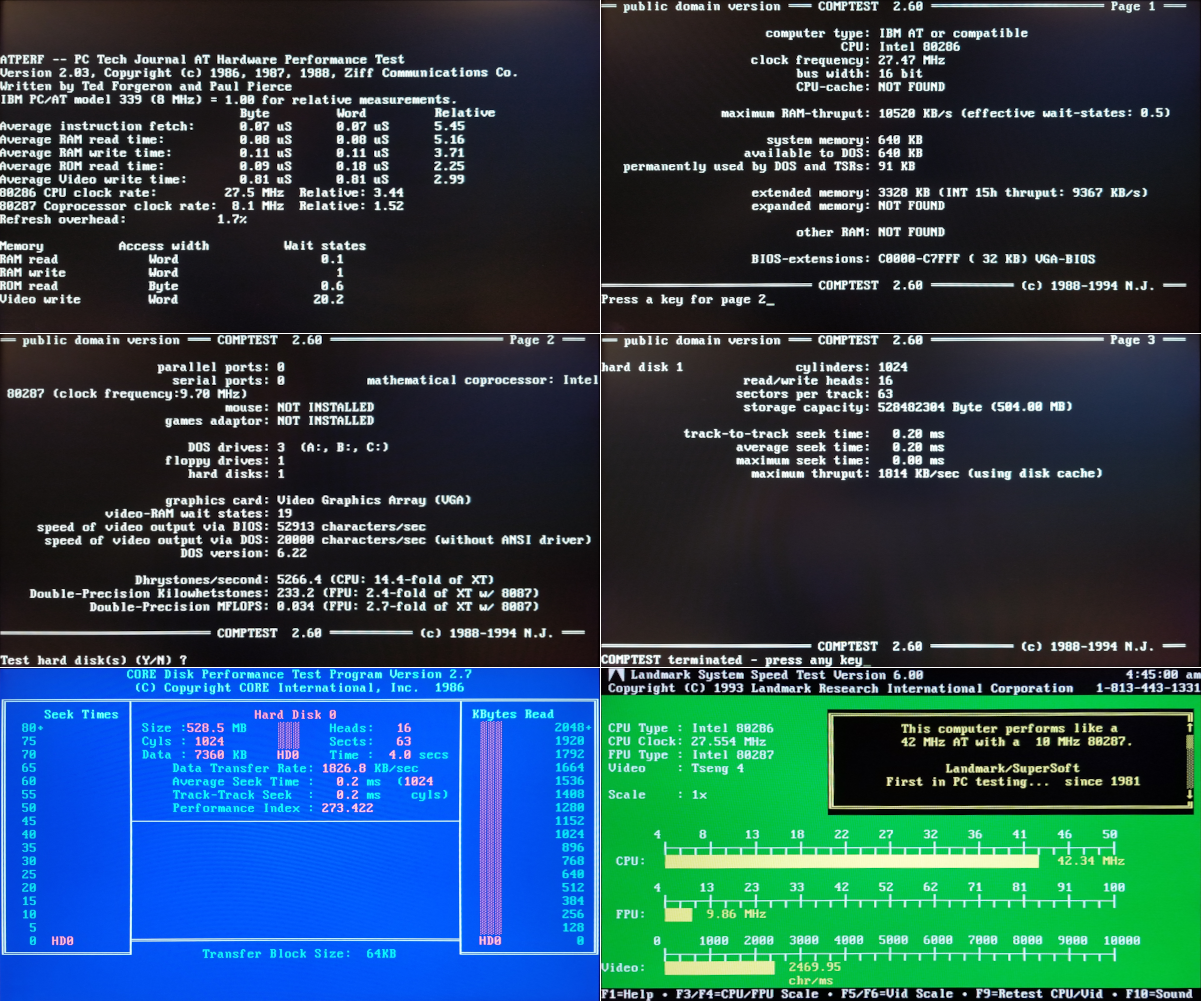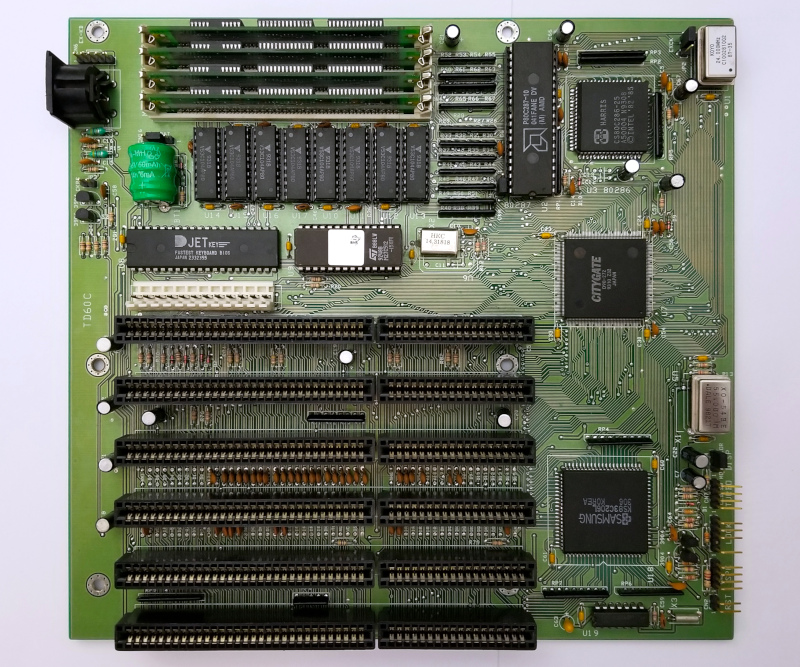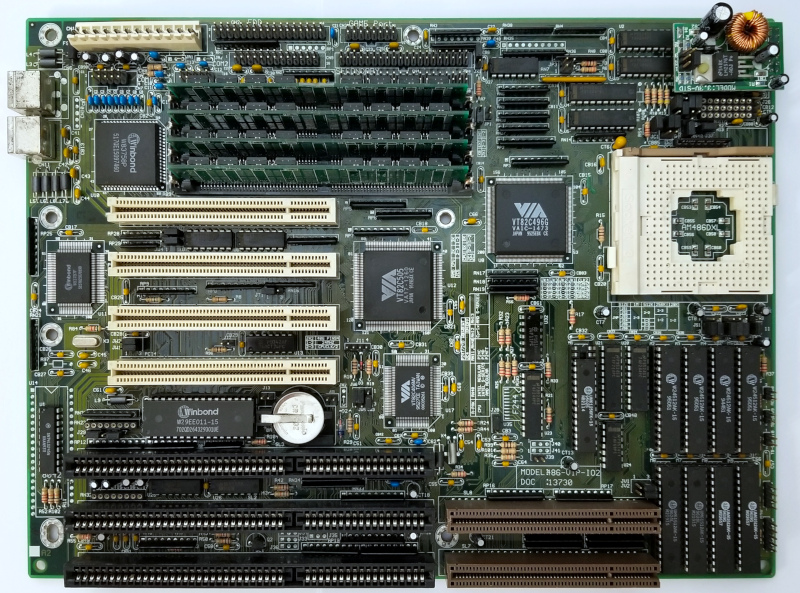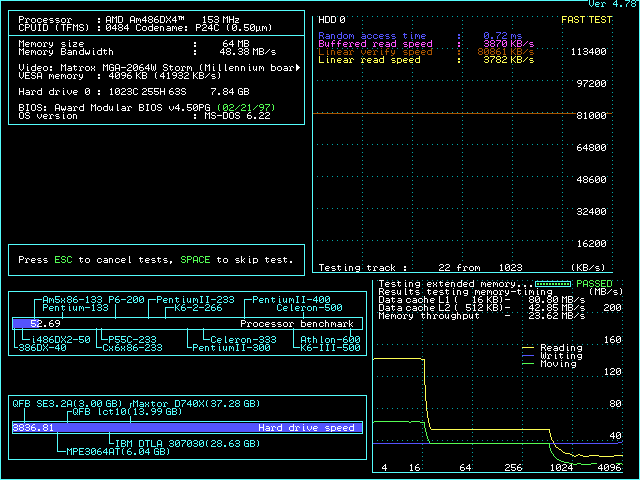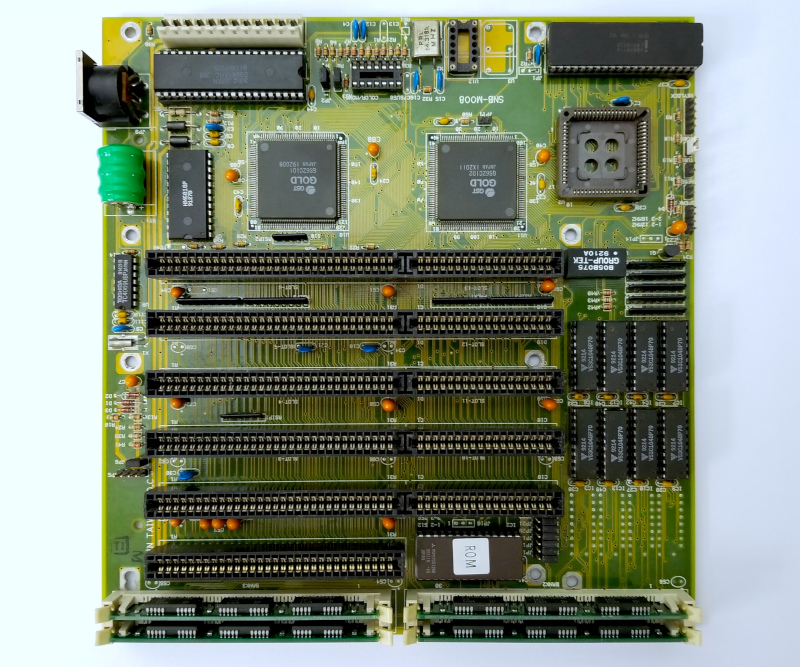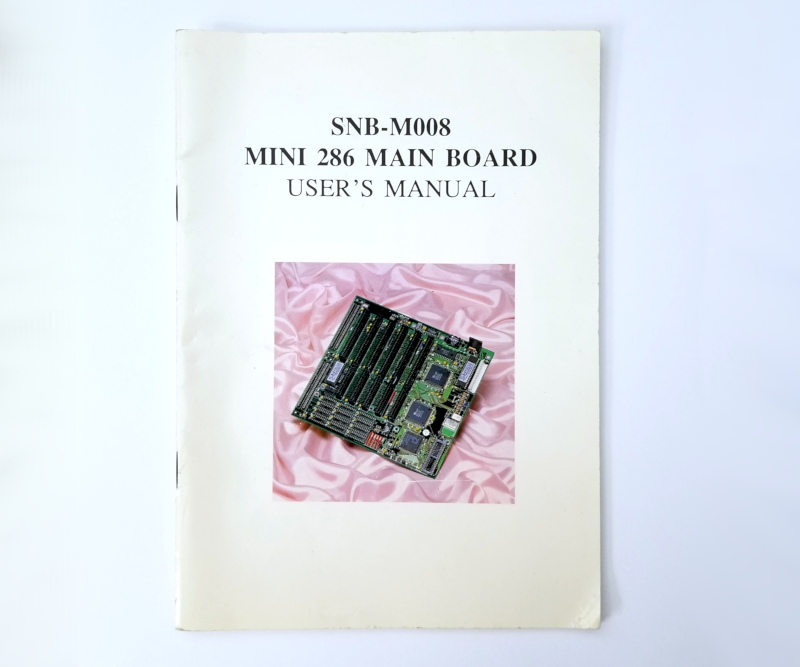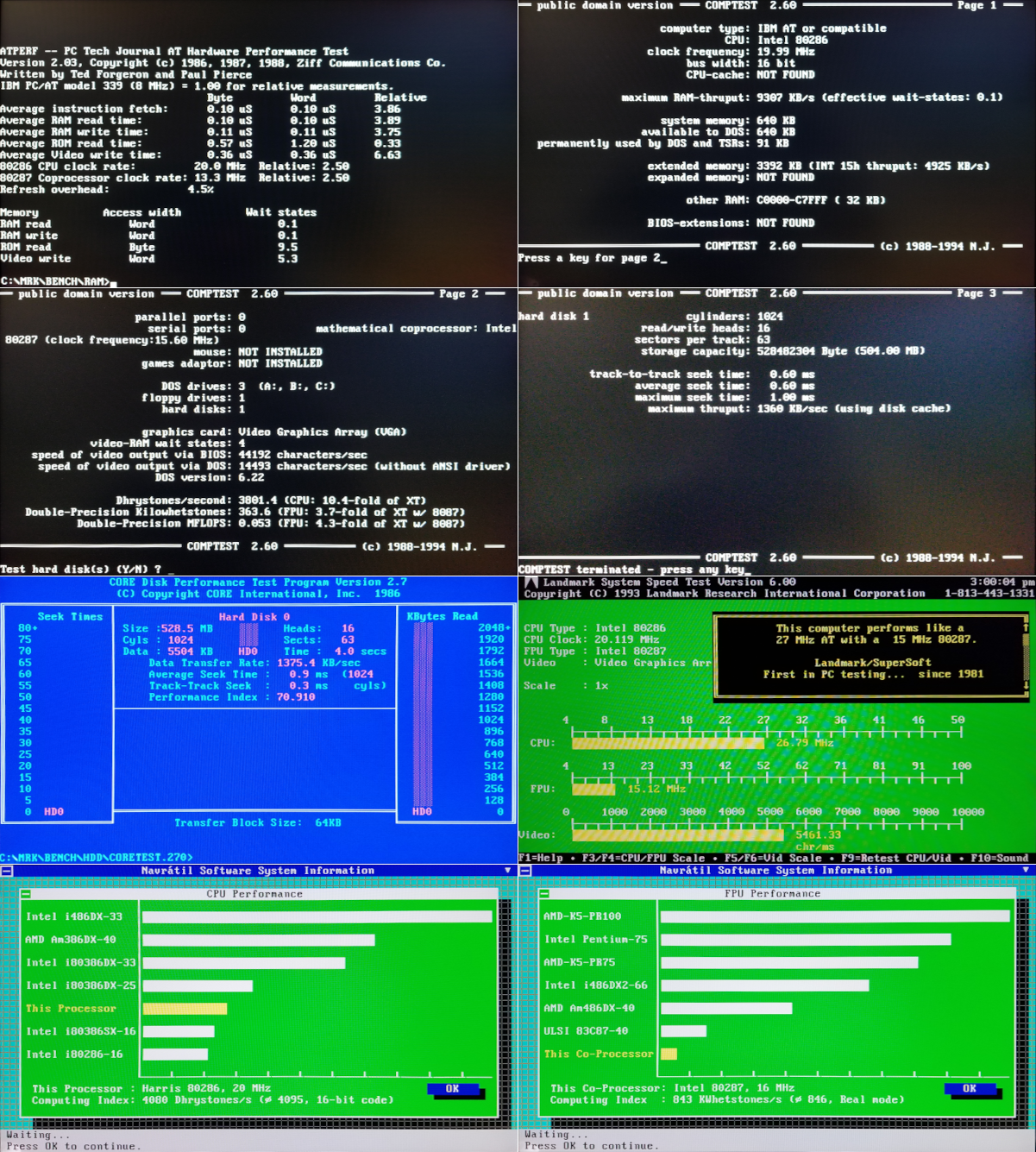Can this be the fastest, long-term stable 286 PC ?
Posted brief info about this subject in another thread Re: 286 dead, long live the 286! Sourcing and building a fast 286 replacement, but here is the full story:
The first post in this thread showed a 286 PC running at 25MHz and 0-wait states.
Its performance was impressive for a 286 class machine - numbers and other statistics are still there.
Later on I improved ventilation for complete long-term stability: Re: 3 (+3 more) retro battle stations
Then tested a CPU upgrade module with Ti486SXL2 running at 60MHz.
Long story short: technically CPU operations are much faster, but the system is compromised in several ways = paper tiger.
Full story here: Re: 3 (+3 more) retro battle stations
Recently was able to achieve complete long-term stability at 27.5MHz and 0-wait states.
This required memory curation on an entirely different level.
In addition, swapped the IIT 2c87 20MHz rated FPU that was used until now:
https://www.petershipkov.com/temp/retro_pc_im … iit_2c87-20.jpg
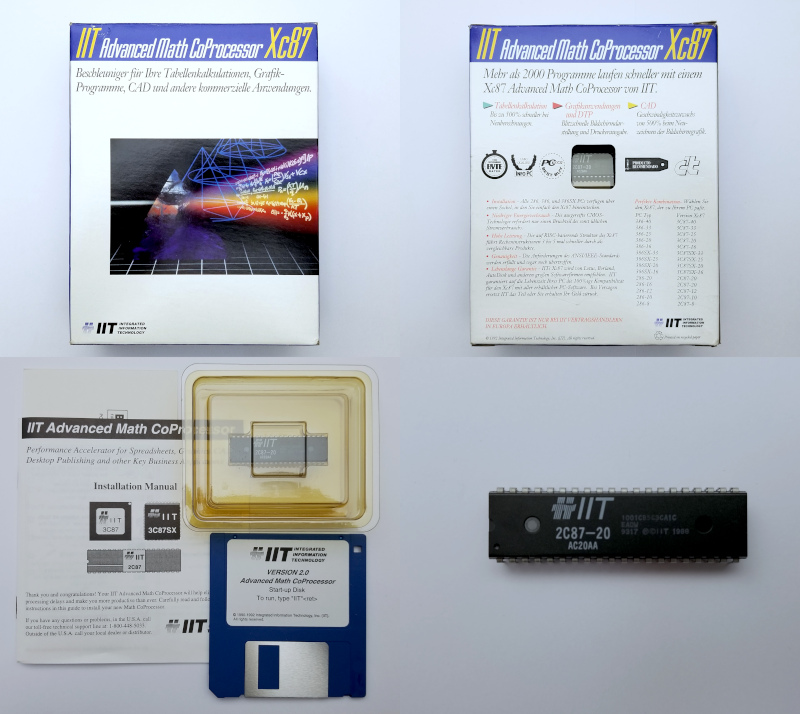
with the fastest 287 one out there (as far as i know) - Cyrix CX-82s87-np-sv:
https://www.petershipkov.com/temp/retro_pc_im … 82s87-np-sv.jpg
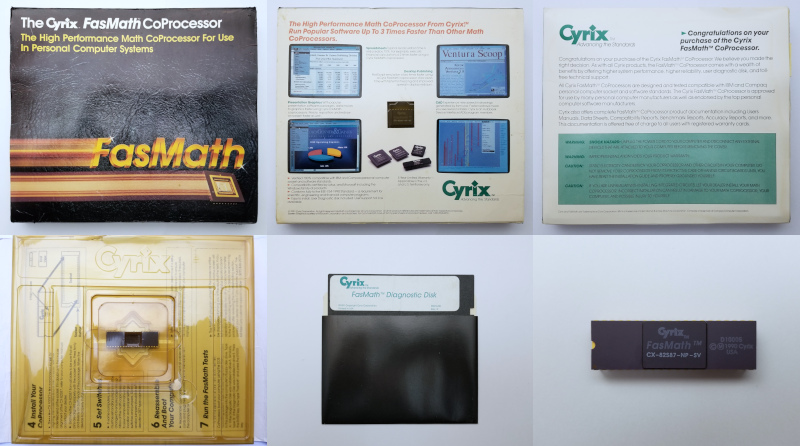
Few more words about the subject.
CX-82s87-np-sv is based on the original FasMath 83D86 core introduced in year 1989.
There is a second variant of the FPU named 287XL+, based on the newer FasMath 83D86 core from year 1991 (also known as 387+)
The later version (black top) overclocks better (can reach 50MHz+), but is clock-to-clock slower than the earlier one (gray top).
Here is set of tests from the first post in this thread showing the perf difference between the two: https://www.petershipkov.com/temp/retro_pc_im … hmarks_lw3d.png
Also, there are other posts on the forums talking about that.
Since the 286 machine cannot go above 32MHz - Cyrix CX-82s87-np-sv is preferrable.
Or to put it in pixels:
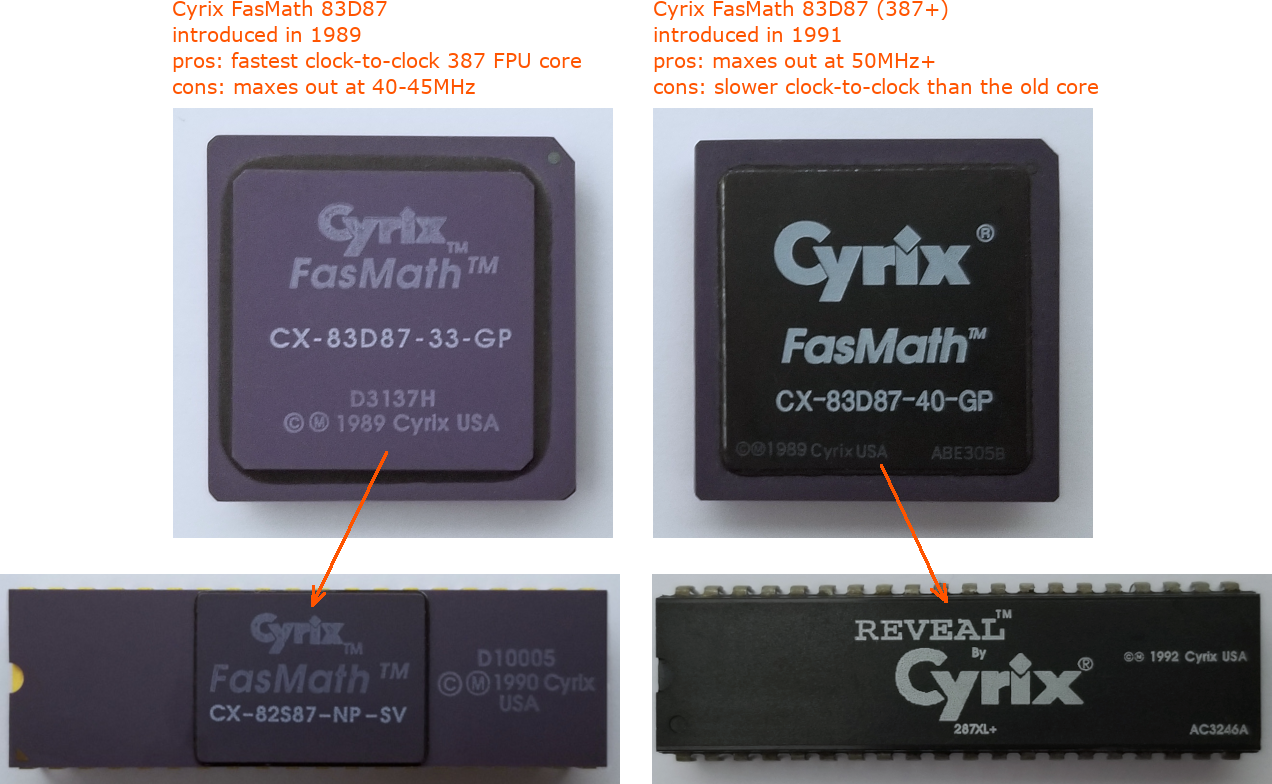
Ok, enough theory. Lets look at some stats:
27.5MHz, 0-wait states, IIT FPU:
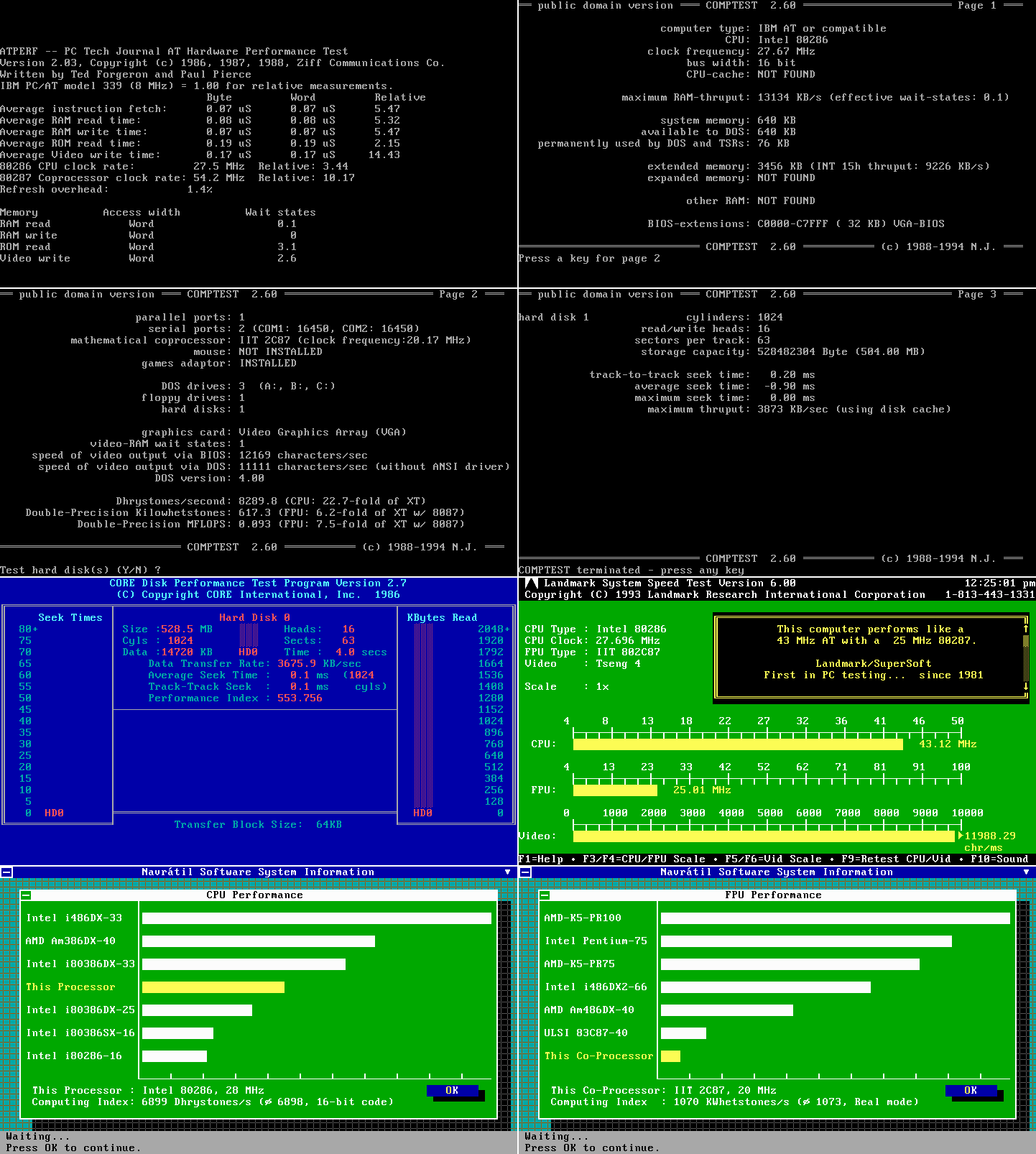
27.5MHz, 0-wait states, Cyrix FPU:
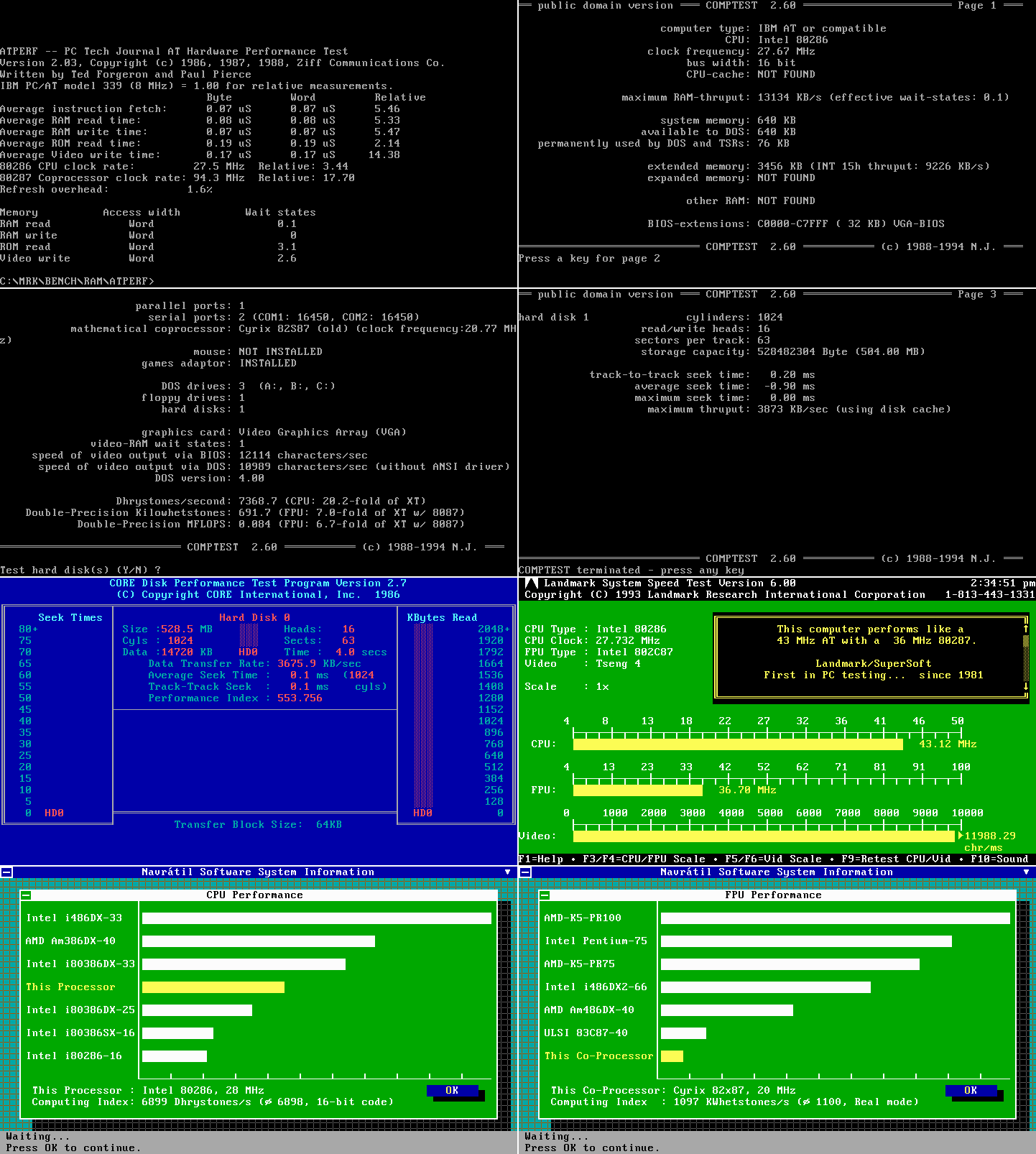
And some benchmarks:
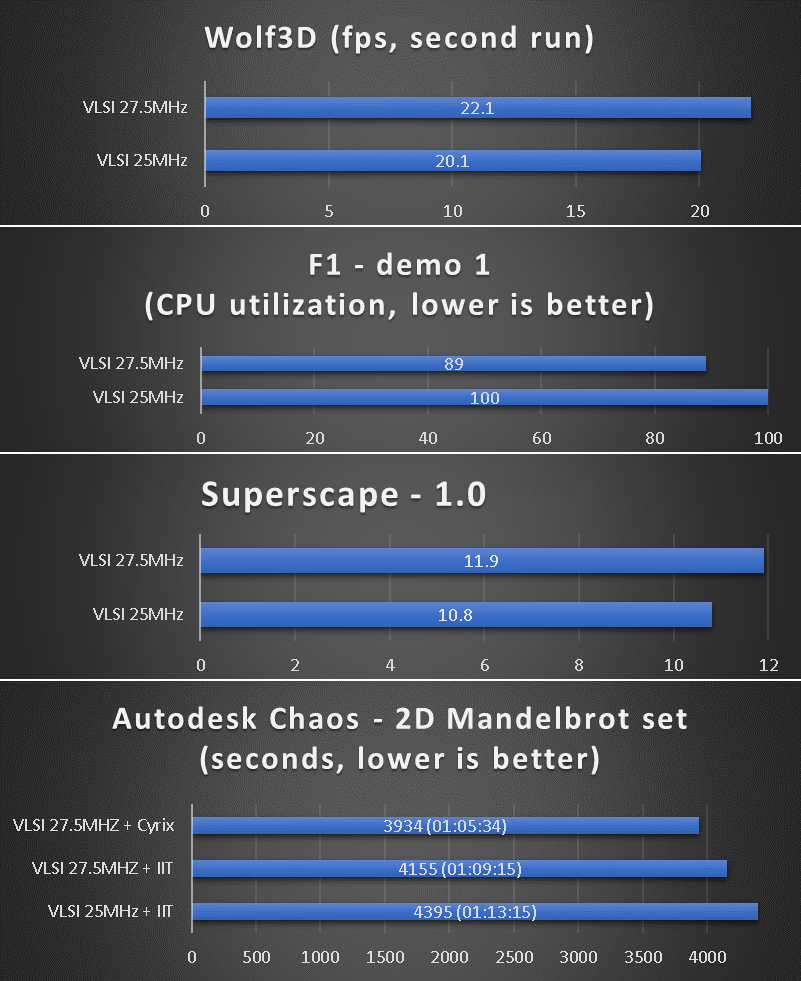
Also some videos showing test runs with full gear:
https://www.petershipkov.com/temp/retro_pc_im … 6_vlsi_27.5.mp4
https://www.petershipkov.com/temp/retro_pc_im … vlsi_27.5_2.mp4
One of the kids named this PC Timmy.
I am pretty sure that this particular chipset/motherboard can roll with 30MHz at 0-waits, but there is no memory to withstand it.
---
Those who bothered to skim through this thread probably noticed that i examined multiple 286 motherboards, motivated by personal curiosity about who is who in the 286 world.
I think i achieved good sampling rate and distribution in my exploration, by targeting different chipsets and brands.
There are 4 boards that stand out.
3 of them are based on VLSI 200 chipsets, one is based on Headland HT12P.
One of the 3 is the board used in the 286 PC in question here.
I usually stay away from bombastic statements, assuming everything shaking out there, but this can very well be the fastest 286, or at least one of the top pretenders.
EDIT: The above statement is further underscored by evolution to 30MHz and 0 wait states.
